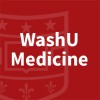
A Study to Evaluate Safety, Tolerability and Efficacy of Lytixar™ (LTX-109) on Uncomplicated, Gram-positive,...
Gram-positiveSkin Infections2 moreThe purpose of this study is to evaluate the safety and tolerability of Lytixar™ applied topically to uncomplicated skin infections. Three dose levels of Lytixar™ (1%, 2% and 5%) versus placebo will be tested.

Safety and Efficacy Study of a Fluoroquinolone to Treat Complicated Skin Infections
Skin Structure InfectionsBacterial Skin Diseases1 moreThe purpose of this study is to assess the efficacy, safety and tolerability of RX-3341 (delafloxacin), a fluoroquinolone, versus tigecycline, a glycylcycline antibacterial drug, in the treatment of complicated skin and skin structure infections.

Safety and Efficacy Study of Oxazolidinones to Treat Uncomplicated Skin Infections
Infectious Skin DiseasesBacterial Skin Diseases3 moreThe purpose of this study is to assess the efficacy, safety and tolerability of RX-1741, an oxazolidinone, versus linezolid, another oxazolidinone, in the treatment of uncomplicated skin and skin structure infections

A Study of the Safety and Effectiveness of Oral Levofloxacin Compared With Oral Ciprofloxacin in...
Skin DiseasesInfectious1 moreThe purpose of this study is to evaluate the safety and effectiveness of levofloxacin, an antibiotic, compared with ciprofloxacin, another antibiotic, in the treatment of adults with mild to moderate infections of the skin and the supportive layers beneath the skin.

Staphylococcus Aureus Decolonization Study
Staphylococcal Skin InfectionsAbscesses3 moreThe purpose of this study is to determine whether measures to eliminate the Staph germ from the skin of the index patient (with a special ointment and soap) are more effective when performed by everyone in the household rather than the patient alone, and whether these methods are effective in preventing future Staph infections. The investigators hypothesize that there will be a greater number of households who are successful in eradicating the staph germ from the index patient when all members of the household participate than households where only the index patient is treated.

Aquacel Versus Iodoform Gauze for Filling Abscess Cavity Following Incision and Drainage
AbscessCellulitisThis study compares Aquacel against routine Iodoform packing for packing abscess cavities after incision and drainage. It is hypothesized that Aquacel will produce speedier healing of the abscess.

Cold Atmospheric Plasma Device for Pediatric Molluscum and Verruca
Verruca VulgarisMolluscum Contagiosum Skin InfectionThis study is going to test a cold atmospheric plasma device (CAP), in particular a floating electrode-dielectric barrier device (FE-DBD), to treat warts and molluscum. The treatment device in this study generates cold atmospheric plasma (gaseous ionized molecules) to rid the virus from the body. Based on the successes of previous dermatologic studies, FE-DBD is being tested for this study to treat warts and molluscum. Patients will be enrolled to test the efficacy and safety of this device. The duration of the study is 4-12 weeks depending on treatment clearance. The number of lesions will be chosen by the dermatologist. Patients will receive standard of care therapy and/or NTAP depending on the number of lesions.

The Effects of Iontophoresis in Women With Gynoid Hidrolipodystrophy.
CaffeineCellulitisIntroduction: Gynoid hydrolipodystrophy (HLDG) or cellulitis is a subcutaneous tissue disorder, with several strategies for its treatment, such as caffeine and iontophoresis. Objective: To evaluate the effects of caffeine-associated iontophoresis for the treatment of HLDG. Methods: In a longitudinal study, participants will be evaluated for: photographic documentation, ultrasound imaging, thermography and quality of life questionnaire. If included, they will be separated into 3 randomized groups (n = 30). G1: use of base gel (n = 10); G2: use of iontophoresis and gel with caffeine (n = 10) and G3: use of iontophoresis alone (n = 10). The groups will be treated with 10 sessions, 2 times per week. After that they will be reevaluated. Statistical analysis: The software used will be the SPSS StatisticalPackage (IBM SPSS Statistics, Chicago, IL, USA). The data distribution will be analyzed by the Shapiro-Wilk test. In case of normal distribution, the data will be described as mean ± standard deviation; otherwise, as median [interquartile range 25-75%]. For comparison of the data, we will use ANOVA and for comparison of means the Tukey test and case not normal distribution, krulskal-Wallis test and the Dunns test. The level of statistical significance adopted will be P <0.05. Expected contributions: It is expected that investigators can contribute to the treatment of patients with HLDG and analyze the effects of iontophoresis with caffeine, both in clinical and scientific practice, providing a method that is valid and reliable for this purpose; multidisciplinary training of highly qualified human resources and the strengthening and consolidation of a research team.

Single Dose vs. Two Dose Regimen of Dalbavancin for the Treatment of Acute Bacterial Skin and Skin...
AbscessWound Infection2 moreTo compare the efficacy of treatment with a single dose of dalbavancin 1500 mg to treatment with a two dose regimen of dalbavancin (1000 mg on Day 1 followed by 500 mg on Day 8) in participants with known or suspected Gram-positive acute bacterial skin and skin structure infections (ABSSSI) at 48 -72 hours after initiation of treatment.

Efficacy and Safety Study of Brilacidin to Treat Serious Skin Infections
Skin InfectionBacterial InfectionThe purpose of this study is to determine the safety and efficacy of three different dosing regimens of brilacidin compared to daptomycin for the treatment of serious skin infections. This study will aid in selecting the appropriate dose of brilacidin for later stage studies.
